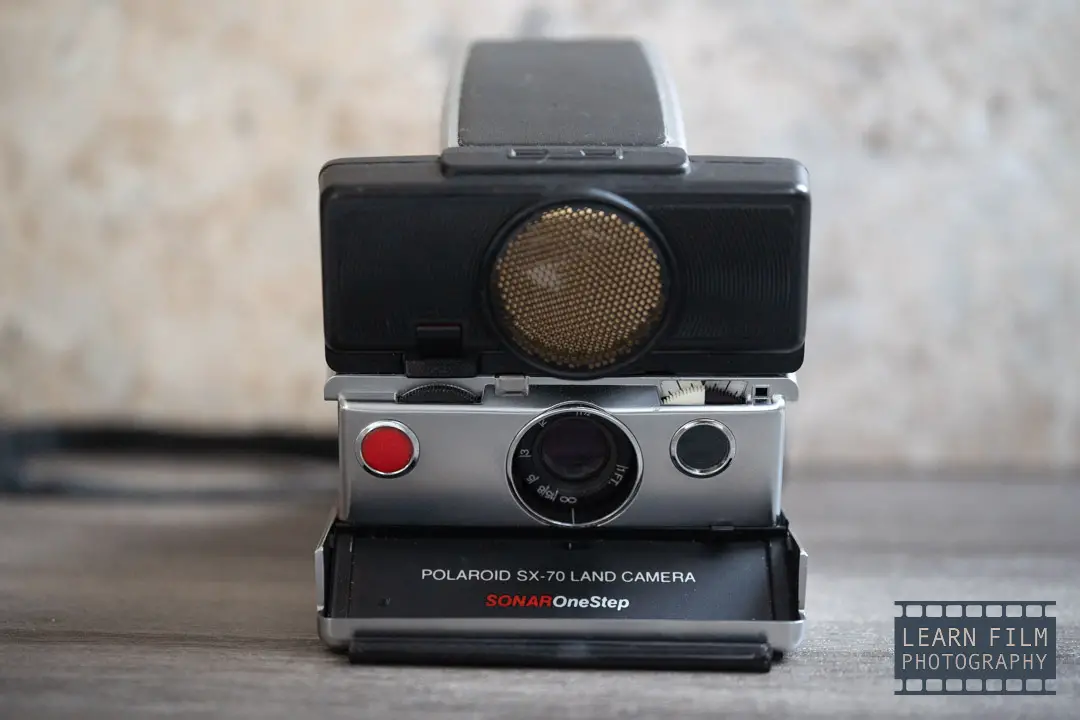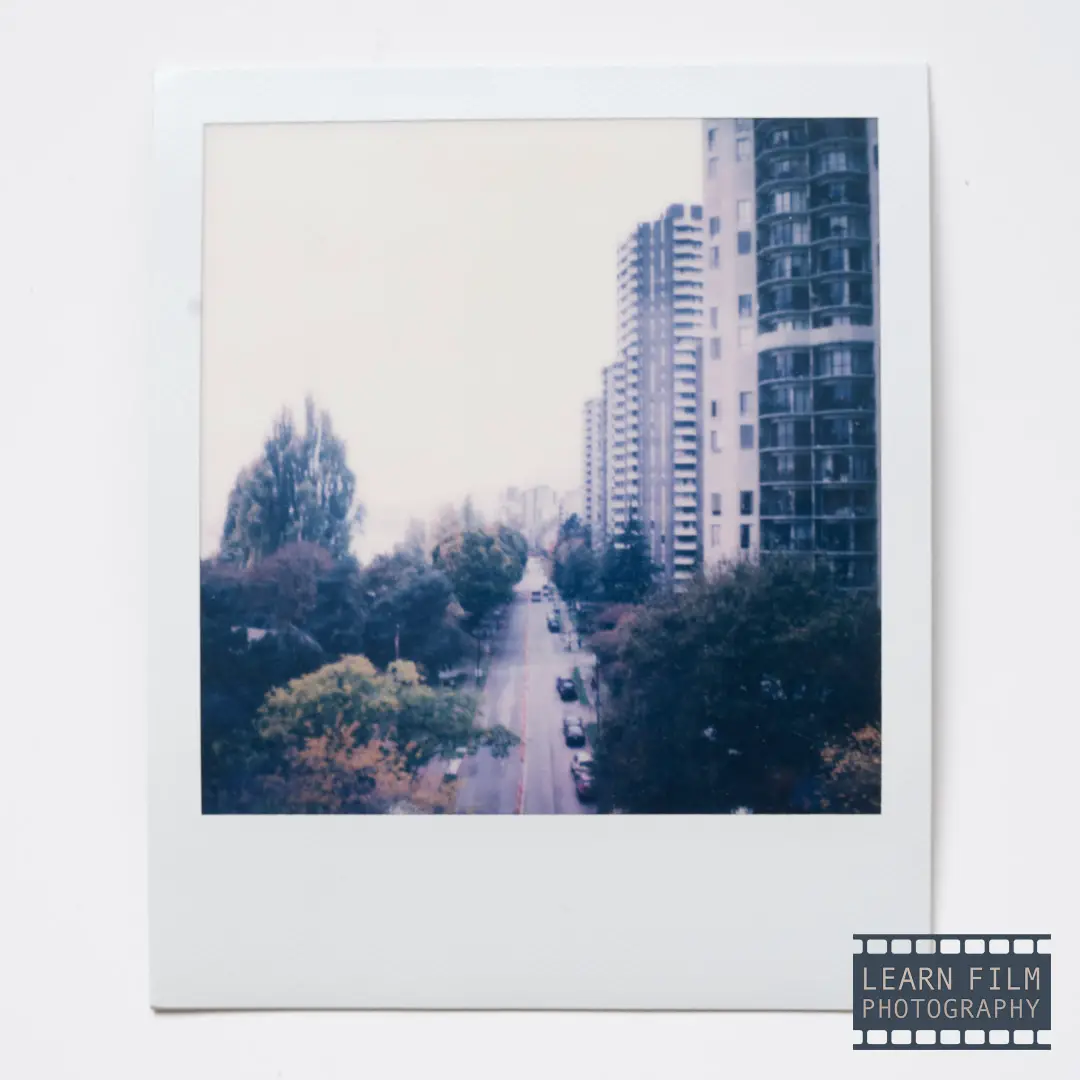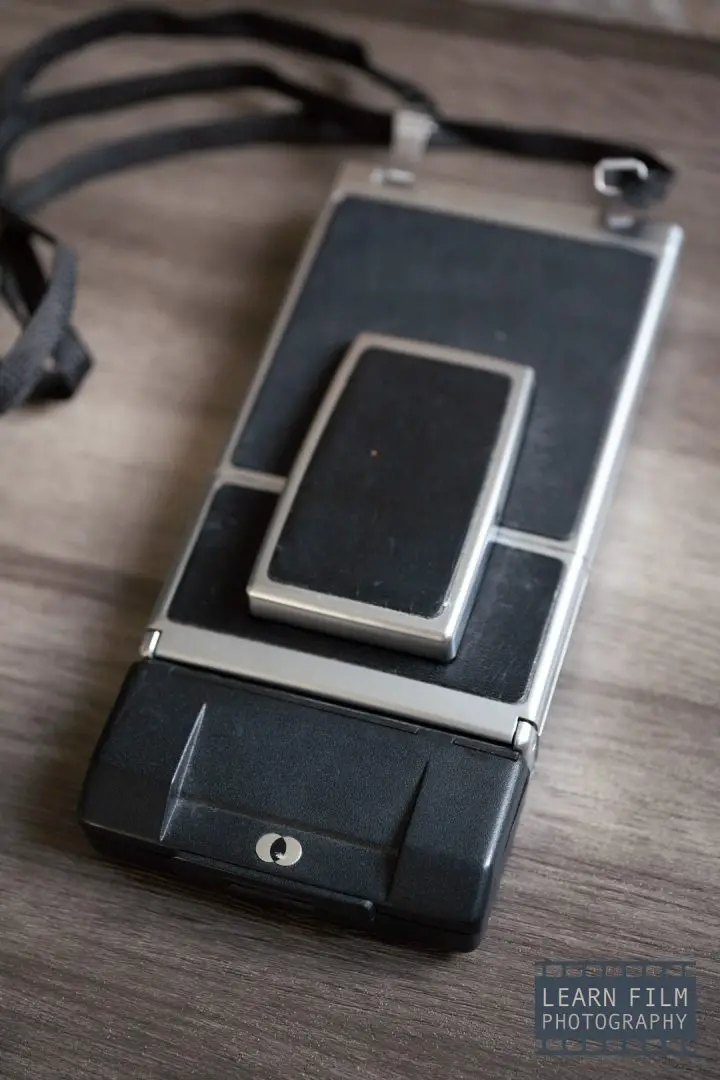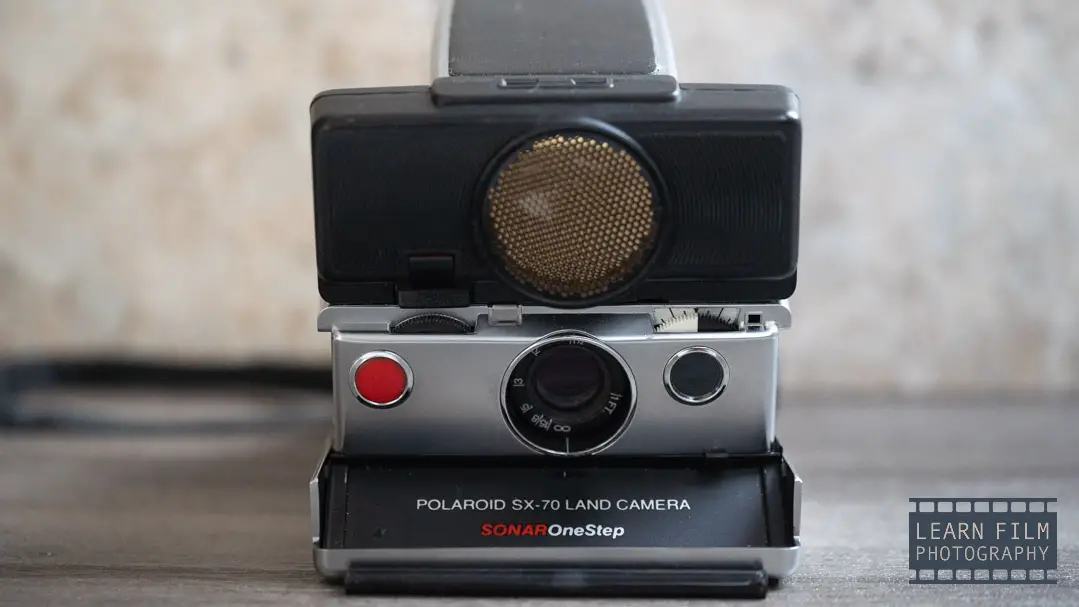Polaroids are a marvel of 20th-century engineering. Instant film was the jpg of the 70s — they were small, uneditable, and everyone knew how to use them. In our modern-day, the Polaroid is still a cultural phenomenon, though much less common, but still equally cool and mystical.
I’ve shot well over $1500 worth of instant film over the past 3 years, and have experienced all of the positives and negatives of this medium. So with the high cost of unreliable Polaroid film, is the SX-70 worth it?
The SX-70 is the highest-quality instant camera on the market. SX-70 film is the sharpest instant film available in a 3.1×3.0” size — larger than a medium format image. The automatic exposure modes and potential for upgrading make the SX-70 the most desirable instant camera on the market.
Edwin Land’s SX-70 has always been the shining star of the Polaroid family. It’s one of the best-designed cameras ever, with simple, intuitive, and unobtrusive operation, making it the favorite of professional photographers and artists alike.
The SX-70 has built up an incredible following over the years, from refurbishers like Brooklyn Film Cameras, to aftermarket upgraders like MiNT camera, and even the open SX-70 project, there are hundreds of people out there who are keeping these cameras modern and operational.
However, the biggest drawback to the camera is not its design, but the film itself.
Get the SX-70 on eBay, or KEH.com for secure transactions where you know you’ll get your money back if something goes wrong with the camera.







What does the Polaroid SX-70 do well?
The Polaroid SX-70 has an amazing form factor, with a bright viewfinder that makes it easy to focus your images. Some models have a split image circle in the bottom of the viewfinder to further aid focusing.
All SX-70 cameras feature the same 4-element 116mm lens, which is approximately 50mm in 35mm, but with medium format depth of field. Even though the lens features a fixed f/8 aperture, it is still capable of producing some of the nicest bokeh (out of focus areas) of any camera on the market.
Images on the SX-70 have a kind of dreamy quality that makes everyone look amazing. Blemishes disappear, and skin tones look incredible. When paired with a flash, like the MiNT Flashbar, or the disposable flashbars from GE, the images give the subject an incredibly flattering glow.
It goes without saying that people love the way they look in Polaroids. They turn every occasion into an event that feels all of the sudden more exciting and meaningful.
Polaroids make fantastic gifts — especially to people who aren’t used to seeing these kinds of cameras. As a wedding photographer, I love giving a pack of Polaroids to all of my clients. Not only do they get to take these photos home immediately after they’re taken (when edits can take weeks or even a couple of months), but they also look vibrant, and glowing in all the photos.
There are a lot of reasons to love Polaroids. And the SX-70 has a special character to it that others just can’t match. Plus, it just fits in my camera bag way easier.

What are the drawbacks of the Polaroid SX-70?
The main drawbacks of the SX-70 come down to the film itself. Ever since Polaroid Originals took over the brand, the film hasn’t been the same.
The packs include 8 photos for $20 in the US and Europe and up to $30-$35 CAD and AUD. When the images fail (through no fault of the user) it’s not fun. It’s exceedingly rare for a Polaroid image to not develop, but it’s common that the images come out over or underexposed because of factory issues causing the film to be more or less sensitive.
The camera does feature an exposure dial on top to give the user a little control over the outcome of the image. But it’s hard to use it to create a better image. I usually keep it at the default setting for good measure.
Polaroid film is getting better and better every year. But it’s still pretty far from reliable.
The next drawback is the ISO 100 film speed. In most situations, ISO 100 is just too slow for handheld photography. In bright light, this camera is great. But even in a not-so-dense forest in the middle of the day, the camera will struggle to get a good shutter speed to capture a portrait without a flash.
The film also lacks dynamic range. The film is incredible, but in nearly every image, either the sky will be blown out, or the foreground will become silhouettes. In some cases, it looks fantastic, but when you want a little more range, this film won’t quite be able to do it.

How to get the best results with a Polaroid SX-70?
Polaroid film is still extremely popular for a reason, though. And with a little bit of care, it’s easy to get some great exposures.
The main recommendation I have for dramatically improving your SX-70 portraits is to use the MiNT Flashbar 2. This simple reusable flash runs on 2x AAA batteries (included in the kit), and helps you get perfect exposures every time. It’ll also stop you from having to use dicey single-use GE flashes that have to be bought on the used marketplace for $10-15 each.
The MiNT Flashbar also unlocks the ability to use 600 film with the SX-70 without a conversion. The flash has two settings — one full power, and a half-power setting that will perfectly expose 600 film at night.
Even in full sun, I always default to using flash with the Polaroid SX-70 to ensure portraits are perfectly and evenly exposed. Indoors (or in the forest) the background will almost always turn black, while outdoors the exposures will be even.
The next tip is to use the Polaroid SX-70 instant film camera in even lighting. Just before sunset, when the sun is still high enough to brighten the landscape, but soft enough to create nice shadows is the perfect time to take photos.
Shoot with the sun shining on your subject for fantastic, even portraits that come out great every time. If you do choose to take a portrait with the sun behind your subject, be sure to move the exposure compensation wheel over so it is showing more white. This will slow down your shutter speed to give more exposure to the darker areas of the image.

Shooting landscapes with the SX-70
The SX-70 is the best instant camera on the market for landscape photography since it is one of the only ones that has manual control of the focus, instead of using focus-free plastic lenses. This means you can create sharp images at any distance. Just be prepared to take multiple images to get the exposure just right.
When taking photos in the distance, always be sure to check your focus. If you push the focus dial all the way to the end, chances are the images will be slightly out of focus unless it’s very hot outside. The elements in the lens are designed to focus slightly past infinity at the end of the range to allow users to focus even in extreme conditions like the desert.
So always be sure to pay very close attention to the focus when taking images of distant subjects. As well, the Sonar version isn’t very good at focusing at infinity, so manual control is essential.
For landscapes where you need a little more control to get your images perfectly exposed, you may need to opt for the more expensive, but fully-manual converted SX-70 cameras, called the SLR670, created by MiNT. These cameras feature a dial (called the Time Machine) that gives the user control over the shutter, and even allows the camera to shoot both ISO 100 SX-70 film or the ISO 640 Polaroid 600 film automatically.
For photographers who absolute most out of the limited dynamic range can use this awesome zone system ruler created by Manitoba-based photographer David Firman, who used more than three packs of film to create this scale so you don’t have to.
Firman also runs the Walk Click Make YouTube channel, where he created a fantastic 2-part series helping photographers get the most out of the SX-70 cameras. The second video in the series gives great information on getting perfect exposures with this camera.

Store the Polaroid film properly
Polaroid film is sensitive. It needs to be stored properly to keep the chemicals working perfectly in tandem.
The best advice is to shoot packs of Polaroid film fresh and keep them stored in the fridge. Also, if possible, the film should be developed between 55 and 82°F (13 and 28°C) to get the best results. Developing at temperatures above 28 will result in even warmer-toned images.
Always allow the film 1 hour to acclimatize before shooting to ensure the chemicals are back up to the right temperature.
Do not store Polaroid film in the freezer — the chemicals will not function properly if they freeze.
After shooting the Polaroids, store them in a place with proper ventilation away from direct light sources. The film may fade over time.
Just like film negatives, Polaroid photos should not be stored in a tin container, as they may prematurely begin to break down. I stored mine in a tin for the last two years, and when I opened them again, there was an awful smell from chemical evaporation.
A better solution is to store them in the Polaroid Boxes, which can each store 40 images without trapping the fumes (find them on Amazon here). Alternatively, you can always store them safely in a shoebox if you’re a photographer like me who seems to go through 40 images in a single month.

Final thoughts — is the SX-70 worth it?
I’ve spent well over $1000 on Polaroid film over the last three or four years, and it’s safe to say I’m completely addicted to this medium. The Polaroid SX-70 is by far the best instant camera that still has film available, and I’m happy to keep buying film as long as Polaroid is able to continue making it.
But these cameras aren’t without their faults. Shoddy exposures, bad dynamic range, limited sharpness, and unpredictable, yet expensive film make it hard to truly experience the film the way it used to be.
Polaroids still retain most of their magic. There’s nothing like having an image printed immediately in front of your eyes. It may not be perfect, but it’s what we have, and I’m still going to keep supporting it as long as it’s made.
The SX-70 cameras are far and away one of the greatest technological advances of the 20th century, and it’s easy to continue marveling at what they’ve done.
If you’re interested in purchasing an SX-70, consider using this link to eBay. All purchases made through these product links give me a small commission without affecting the end price for the buyer or seller on eBay. These small commissions help me feed my growing family keep this blog running, and help me to make this a full-time career.

By Daren
Daren is a journalist and wedding photographer based in Vancouver, B.C. He’s been taking personal and professional photos on film since 2017 and began developing and printing his own photos after wanting more control than what local labs could offer. Discover his newest publications at Soft Grain Books, or check out the print shop.

